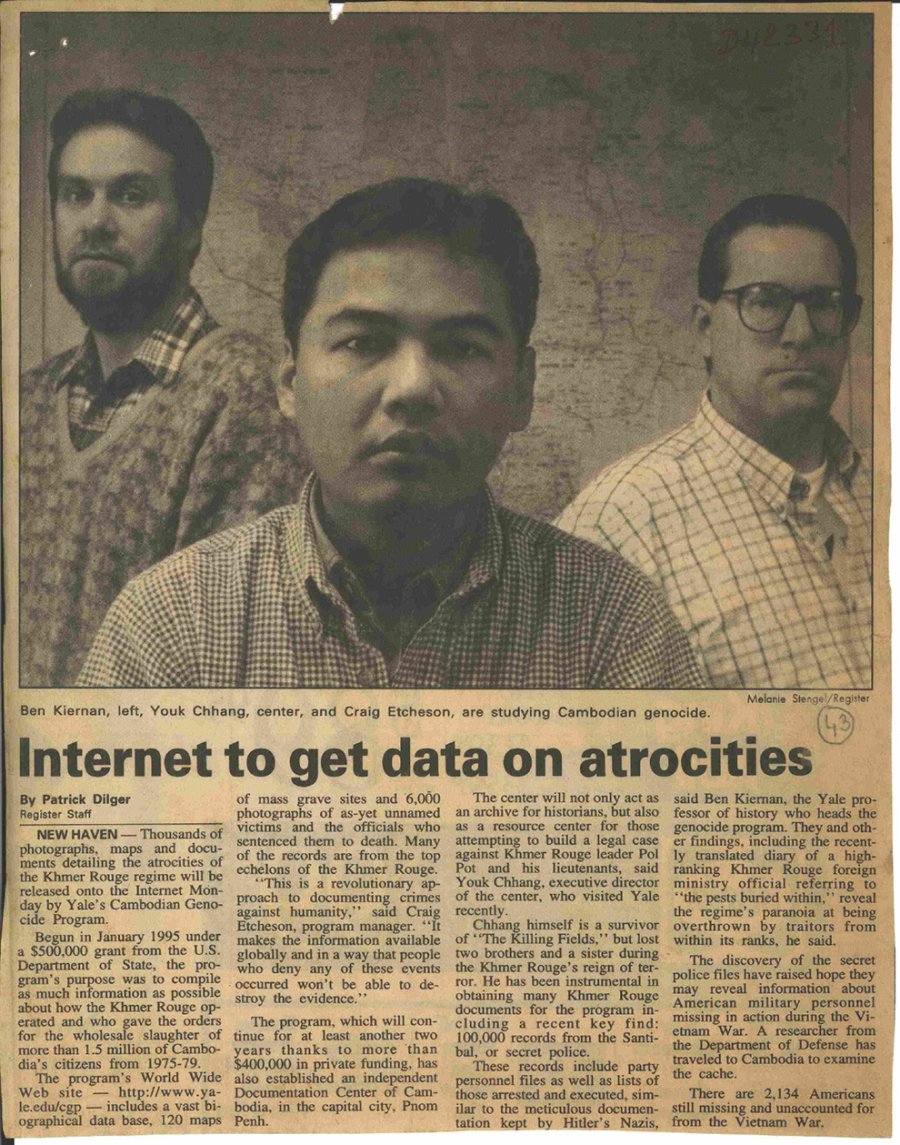September 11, 2024
PHNOM PENH – In a digital age where social media often serves as a platform for casual updates, several Cambodians are using it for something far deeper – finding family members lost during the Khmer Rouge regime more than 40 years ago.
Through the Facebook group “Missing People in Khmer Rouge Regime,” individuals from all over the world are sharing heartfelt posts in search of their loved ones, hoping to reunite with them after decades of separation.
With over 9,000 members, the group has become a beacon of hope, allowing survivors and their descendants to piece together fragments of the history that the brutal regime destroyed.
In March 2024, Virginie Ok, who lives in South Melbourne, Australia, posted a plea on the group’s page.
Her mother, Socheata Phang, had been searching for her high school friend, Bakly Sieng Hay, since the regime tore families and friendships apart in the late 1970s.
“In 1983, the friend sent a letter to my mother in France, from Australia,” Virginie explained.
“However, this letter was hidden from her and she just discovered its existence a few weeks ago,” she added.
The emotional search has stretched from Cambodia to France and Australia, but with no clear answers yet.
Virginie attached a picture of her mother, hoping that someone might recognise her friend and reconnect them.

The letter and a photograph of Virginie Ok’s mother. PHOTOS: MISSING PEOPLE IN KHMER ROUGE REGIME FACEBOOK PAGE/THE PHNOM PENH POST
For many, like Marie Ly, who now resides in Fremantle, Western Australia, the search for relatives lost during the Khmer Rouge regime brings both hope and sorrow.
In an August post, Marie wrote, “My mum lost them in Cambodia … we went back in 2019 with these photos but no luck.”
She, too, turned to the Facebook group as a last resort, having combed through countless posts searching for anyone who might recognise her family, but her search has so far been fruitless.
“Please don’t ask me for names – English spelling could be anything, not to mention all the changes to personal details as a result of fear!” she added, highlighting the difficulties many face when tracking down loved ones.
Youk Chhang, the executive director of the Documentation Center of Cambodia (DC-Cam), has closely followed the stories emerging from the group.
He commended the platform, saying, “This is a very noble act by the youth. I am grateful for their initiative and honoured to assist them with whatever can be done.”
DC-Cam, which holds over a million pieces of historical data from the Khmer Rouge period, continues to support efforts like these, offering resources that could help survivors find missing relatives.
“We continue to document what happened during the Khmer Rouge,” he told The Post, emphasising the importance of recording the atrocities for future generations.
Chhang’s work and the stories posted on the Facebook group highlight the significant gaps in Cambodian family histories caused by the regime.
He explained the historical context that left many families broken apart and scattered.
“There were three instances in which people were separated. The war between 1970 and 1975 effectively divided Cambodia between the ‘liberated area’ controlled by the Khmer Rouge and areas controlled by the Khmer Republic led by General Lon Nol,” he said.

A news article detailing the digitalisation of the archives kept by the Documentation Center of Cambodia. PHOTO: DC-CAM/THE PHNOM PENH POST
This war not only split political loyalties but also drove a wedge between family members, with some fighting on opposite sides.
The second wave of separation came with the Khmer Rouge’s victory in April 1975. The regime implemented policies that sought to dismantle the family unit.
“Various work brigades were created to replace previous social units. Marriages were organized en mass by Angkar [the ‘organisation’, as the regime called itself]. Children were put in child units and taught that their parents were Angkar,” Chhang noted.
The deliberate fracturing of families under the regime, combined with forced relocations and labour camps, made it difficult for survivors to track down their loved ones, even in the immediate aftermath of the regime’s collapse.
The third and final wave of separation occurred after the Khmer Rouge was overthrown in 1979. Thousands of Cambodians, rather than returning home, fled to the west, seeking refuge along the Thai border or in third countries.
Many repatriated to Cambodia only in the 1990s, while others settled abroad permanently. This mass migration led to the Cambodian diaspora, with up to a million Cambodians now living abroad.
“The history of the Khmer Rouge genocide is an important part of Cambodian and world history because it provides important insights and guidance on current and future atrocity crimes prevention efforts,” explained Chhang.
But documenting this dark period is not solely about preventing future genocides. Chhang said studying the history of the Khmer Rouge regime provides opportunities to reflect upon critical questions about humanity, government and basic concepts of human rights.
He said that these reflections are crucial not only for healing but for understanding what allowed such atrocities to occur in the first place.
For the thousands of members in the Facebook group, the search for lost loved ones is both deeply personal and reflective of a broader Cambodian story.
Virginie, Marie, and others continue to post pictures and share memories in the hope that one day, a distant cousin, a long-lost friend or even a stranger with a memory of the past might provide the key to reuniting families torn apart by history.
As Chhang succinctly put it, “Documentation provides the ingredients for post-conflict societies to heal, transform, and move on from their horrific history.”


